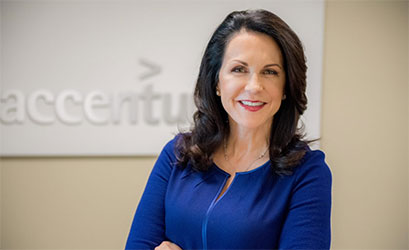How manufacturers can prepare for the new reality of work.

Home working and remote collaboration are likely to be in place for some time.
By Oliver Wright, global lead Consumer Goods & Services, Accenture and Eva Sage-Gavin, global lead Talent & Organization / Human Potential, Accenture
In this extraordinarily challenging time, we’ve all had to adapt to far-reaching changes in the way we live, consume, work and socialize. Manufacturers have had to act quickly and decisively to support their people, help communities fight the pandemic and ensure their businesses come through the crisis stronger.
As most markets will likely experience cycles of opening and closing for the foreseeable future, a new set of challenges are emerging. Manufacturers face the need to balance ramping up operations while ensuring the mental and physical health and wellbeing of their workforce. No-one should pretend this will be easy. It will require exceptional flexibility, resilience and resourcefulness.
With broad consensus that we won’t go back to life as we knew it, what can manufacturers do to prepare for the new reality of work? Consider these five actions:
Be prepared to quickly redeploy people to areas of high demand. Review your training programs to ensure they’re upskilling the workforce for the demands of the future. Carefully prioritize who in the business needs to travel internationally and update HR and travel policies accordingly. Accept that home working, video-conferencing and remote collaboration are likely to become permanent features of your operations. Rethink how time management, performance monitoring and career progression need to change for this more physically dispersed workforce.
Just as important, consider making temporary resilience boosting policies – such as paid sick leave – permanent whilst going beyond mental health awareness to offer services that tackle root-cause issues.
Digital technologies can play a key role in ensuring safety throughout your return to work. By creating a “digital twin” of the manufacturing plant, for example, it’s possible to simulate and test layout configurations. Use those simulations to assess how well people would be able to comply with social distancing rules, particularly in high-risk areas, such as canteens, sanitary facilities and meeting rooms. In addition, consider whether you want to deploy ‘safe worker’ apps and temperature monitoring facilities to alert workers when they’re breaching proximity limits and to detect areas of overcrowding in the workplace in real time.
By taking these five actions, you will better position your organization to manage the uncertainty of the coming months and ramp up and renew your operations – all while ensuring your people stay safe and well.

Oliver Wright
About the Authors
Oliver Wright the global lead for the Consumer Goods and Services practice at Accenture. Oliver works with the C-suite of leading companies to set strategy and guide growth, developing offerings and thought leadership to help consumer goods clients become more agile and innovative, transform and reshape their businesses for growth.

Eva Sage-Gavin
Eva Sage-Gavin is the global lead of Talent & Organization and Human Potential practice at Accenture. Eva works with clients to harness digital technologies and evolve their workforces to innovate, unlock human potential, and drive transformation.
Scott Ellyson, CEO of East West Manufacturing, brings decades of global manufacturing and supply chain leadership to the conversation. In this episode, he shares practical insights on scaling operations, navigating complexity, and building resilient manufacturing networks in an increasingly connected world.